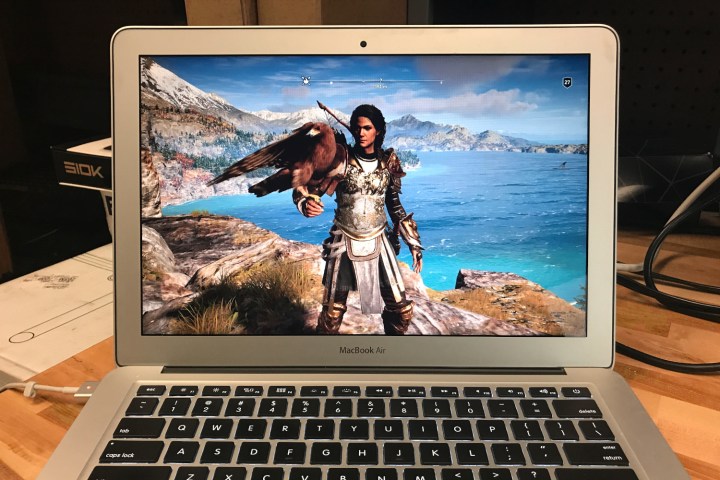Nvidia’s cloud-streaming gaming service GeForce Now has recently added a new plan called RTX 3080. At twice the price of the tier that used to be the best (dubbed Priority), the new plan is said to deliver the performance of a high-end gaming computer.
While Nvidia is busy promoting the RTX 3080 plan, existing GeForce Now Priority members noticed that their games are not being rendered at 60 frames per second (fps) as promised. After this discovery, Nvidia affirmed that while no games in the RTX 3080 plan are limited, the company admits to intentionally capping the fps in certain games for players who use the Priority tier. We tested several games to check out how they perform when using Nvidia GeForce Now.

The Priority tier costs $50 per month and promises gaming performance equal to using a premium gaming rig, priority access to gaming servers, up to six hours of gaming at a time, and most importantly, up to 1080p gaming at 60 fps. However, it appears that not all of the 1,100 supported games are able to deliver this kind of performance, although this is in no way indicated by Nvidia on the membership page.
The situation was made public when a Reddit user contacted Nvidia’s customer service, noting that Guardians of the Galaxy caps out at 50 frames per second. This cannot be changed in the game menu. This prompted Nvidia’s confirmation that certain titles are blocked from going above a certain fps threshold.
Testing shows varying results
We’ve done some of our own testing to verify whether Guardians of the Galaxy, as well as some other AAA titles, are capped on GeForce Now. Guardians of the Galaxy is a DLSS game and has a render resolution of 50% regardless of whether the setting is on or off. Tweaking the setting doesn’t seem to affect the image quality or performance.
Our in-game benchmark produced an average of 80 frames per second, which is much higher than the 50 fps experienced by the Reddit user mentioned above. Regardless, Nvidia confirmed that the game is capped at 50 fps.

“Some games on GFN are capped at certain fps such as Cyberpunk (at 45 fps) and others. For Guardians of Galaxy, it’s capped at 50 fps, so it’s not a bug,” said Nvidia’s representative in an email.
Nvidia has published a full list of GeForce Now games that have capped frame rates for Priority users. According to Nvidia, the premium systems used for Priority members were unable to sustain a steady 60 frames per second in these titles.
The company chose to limit the frame rates by adding a new setting as opposed to improving the performance of these rigs for Priority users. This setting is called Optimal Playable Settings (OSP) and can be overridden in most, but not all of the games provided by Nvidia GeForce Now. Nvidia claims that limiting fps in some games will ensure a consistent, high-quality experience to all Priority members, but Nvidia also assures that the games are still being streamed at 60 fps.
We tested several other games from Nvidia’s list to verify the fps capabilities provided to Priority members. Assassin’s Creed Odyssey is supposed to be capped at 45 fps, but the cap is turned off and the game produces an average of 59 fps. It’s interesting that Assassin’s Creed Valhalla is not on the list alongside Odyssey, as both the games run on the same engine.
Cyberpunk 2077, meanwhile, is supposedly capped at 45 fps, though I captured 60 fps on the video stream with a local frame rate tool. It appears that GeForce Now does indeed still stream at 60 frames per second, even if the game itself doesn’t render that many frames.
Valheim and Path of Exile are also found on Nvidia’s list, and that’s another surprising example of Nvidia’s strange fps capping pattern. Both of these titles are not very demanding when it comes to system requirements, so it’s curious why Nvidia chose to cap them at 50 fps each — the same as the famously resource-heavy Cyberpunk 2077.

DLSS turned on
We have also discovered that Nvidia DLSS is on in most supported games. As a Founder, you generally cannot change the settings, but DLSS is an exception. Turning it off results in a massive improvement in image quality.
It’s difficult to say whether all of these frame rate limitations affect every single user. As proven by our testing, some games achieve higher fps than what Nvidia intended. In addition, it’s likely that members of the $100-per-month ‘RTX 3080’ tier don’t suffer from these restrictions, although Nvidia hasn’t disclosed if any games are fps capped in that tier.
Despite the discrepancies that Nvidia failed to disclose, GeForce Now remains a solid alternative in times of the ongoing graphics card shortage. However, it would certainly be preferable if Nvidia let future members know about possible fps caps ahead of time.
Editors' Recommendations
- Nvidia RTX 50-series graphics cards: news, release date, price, and more
- Nvidia just fixed a major issue with its GPUs
- Nvidia DLSS 3: explaining the AI-driven gaming tech
- Here’s why I’m glad Nvidia might kill its most powerful GPU
- Nvidia’s peace offering isn’t working




